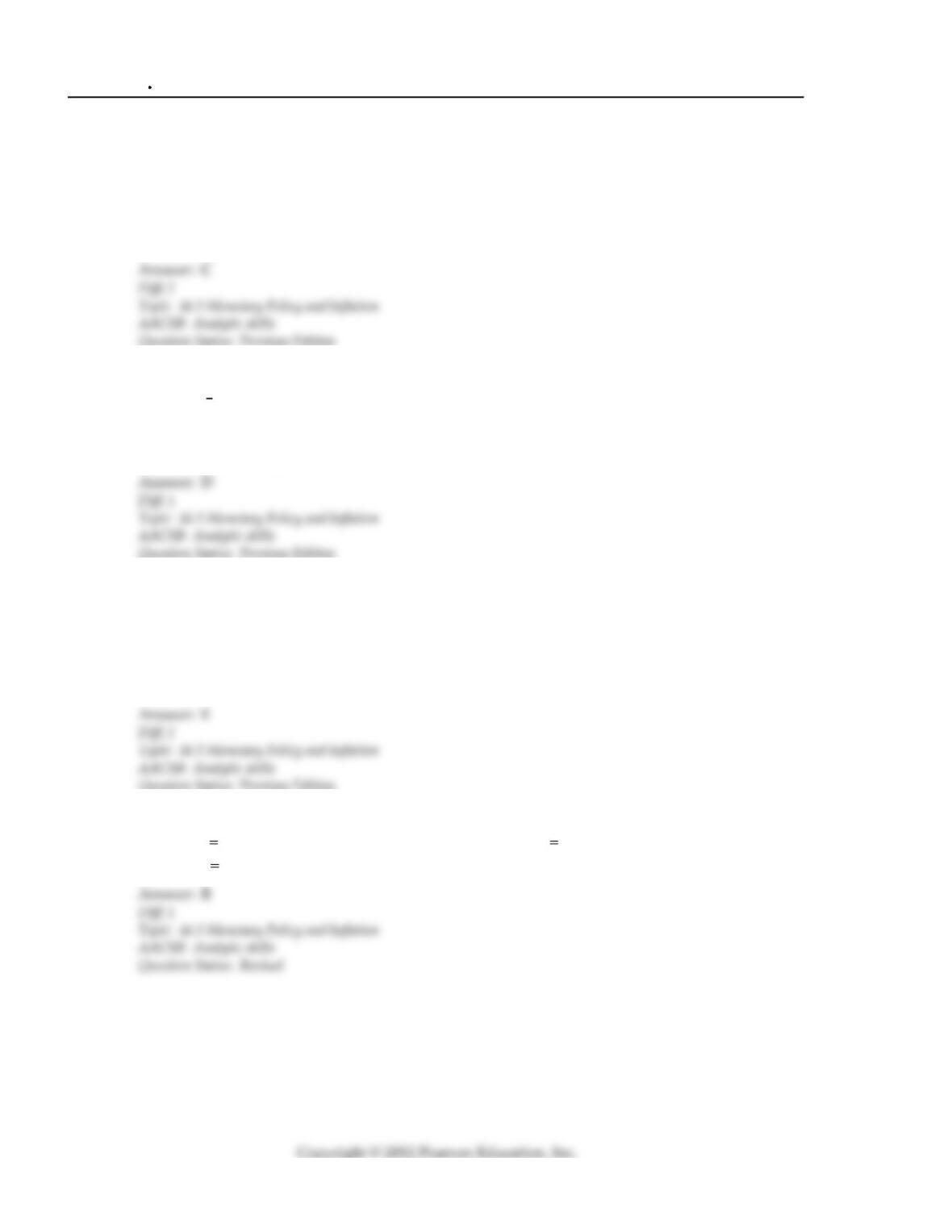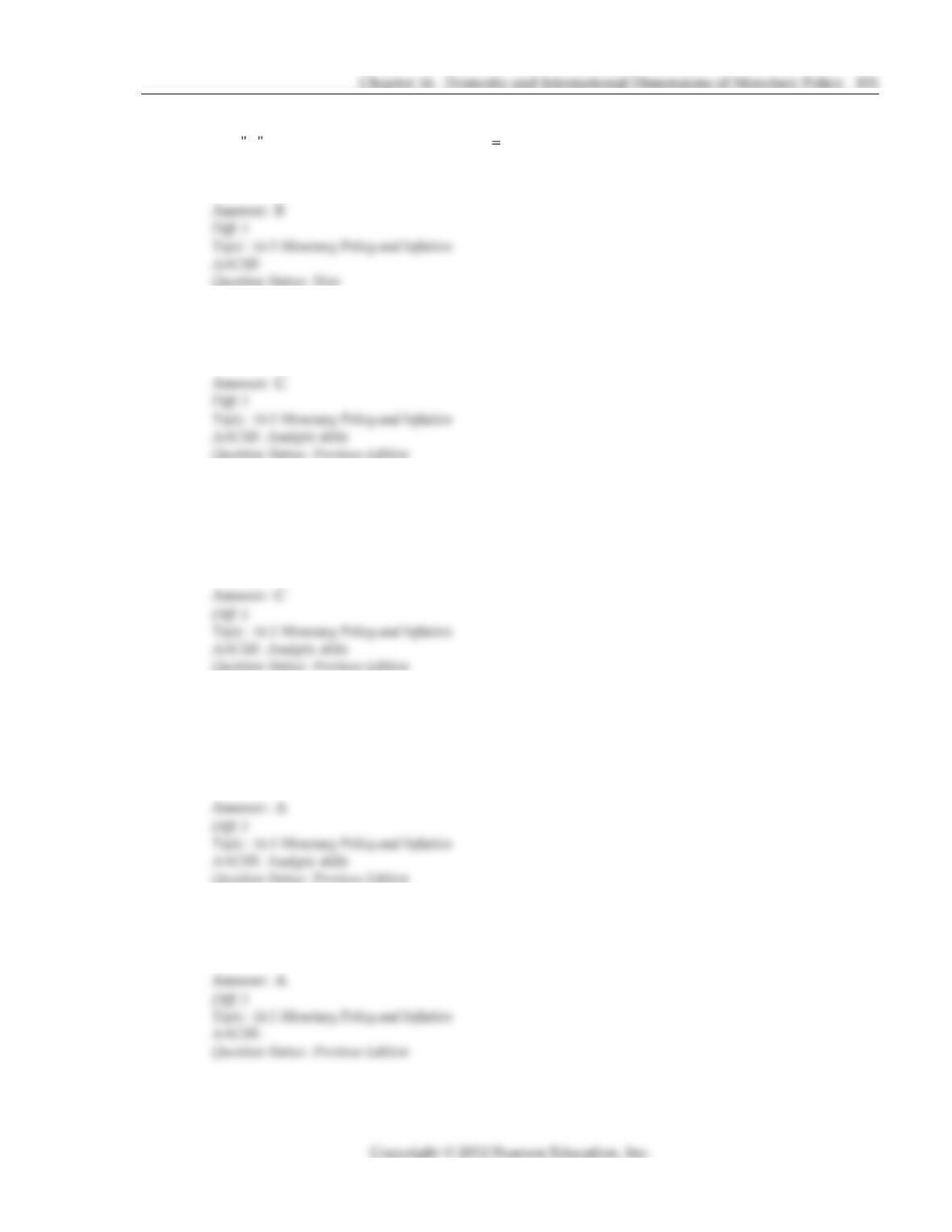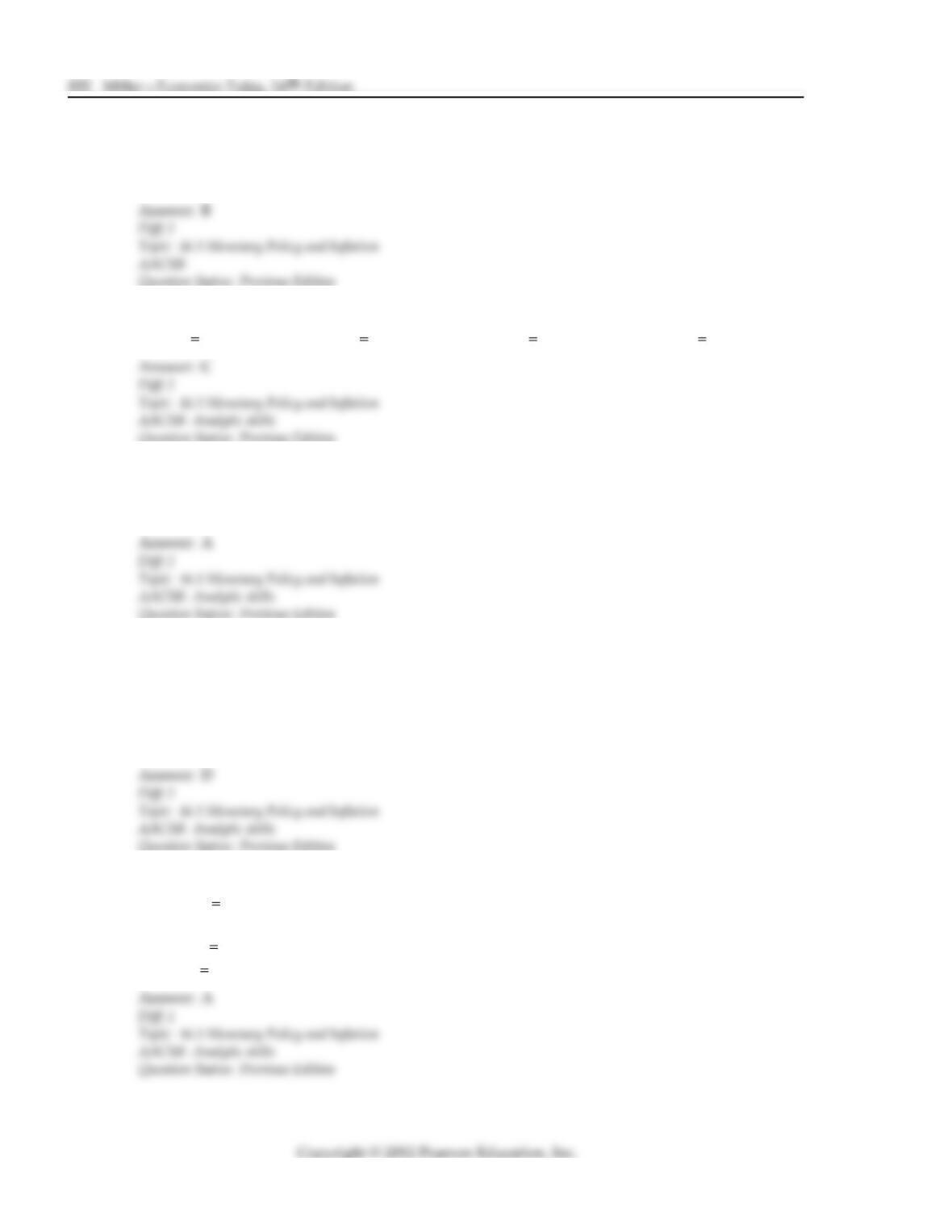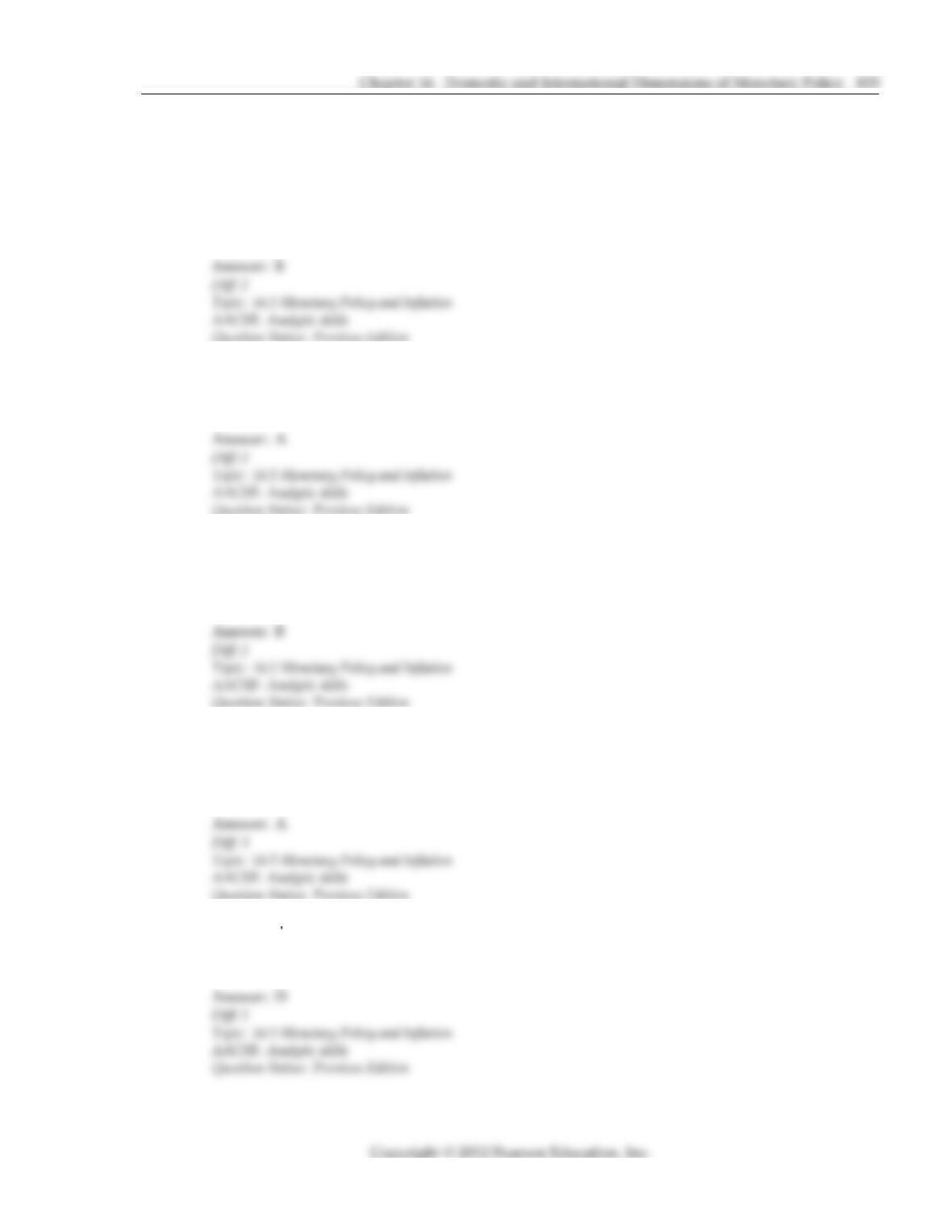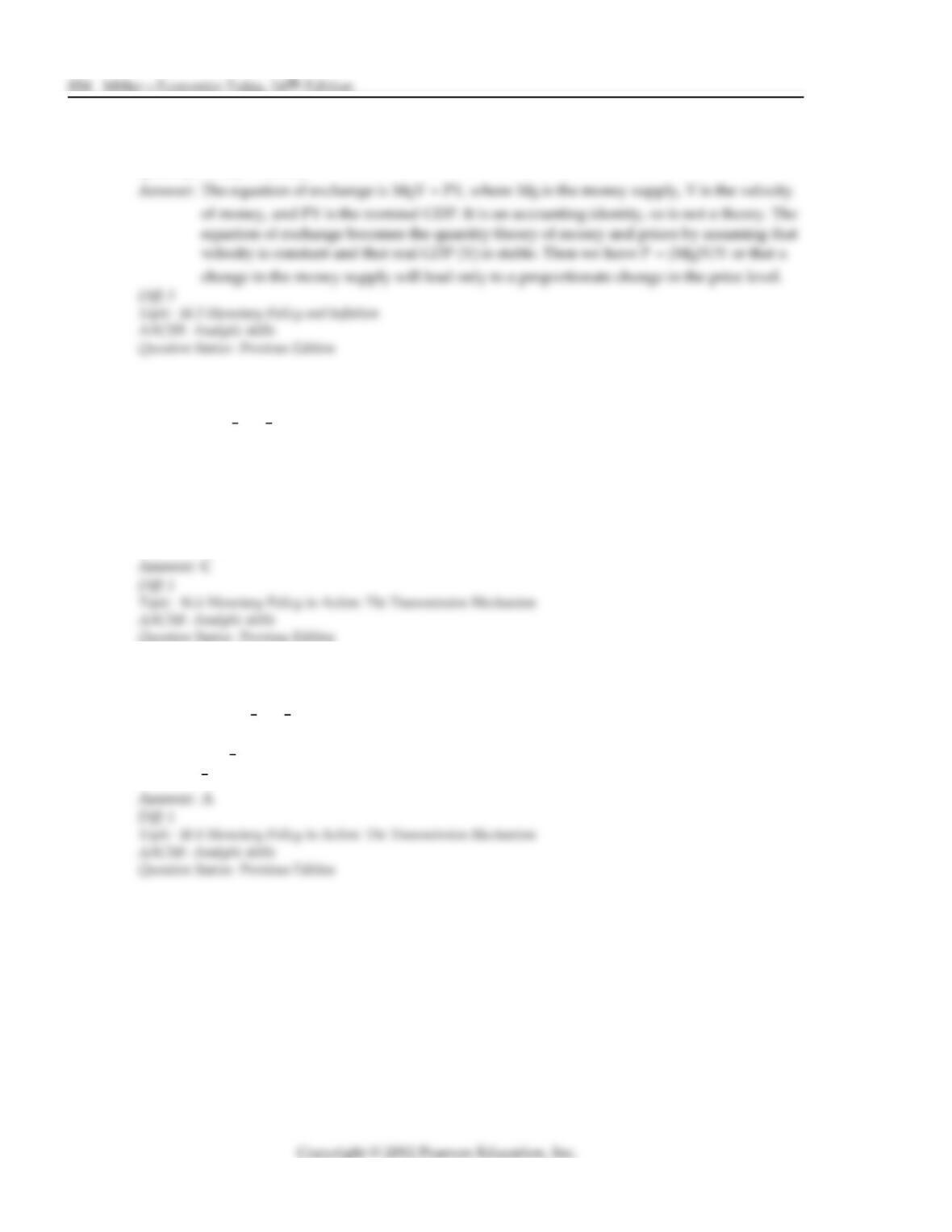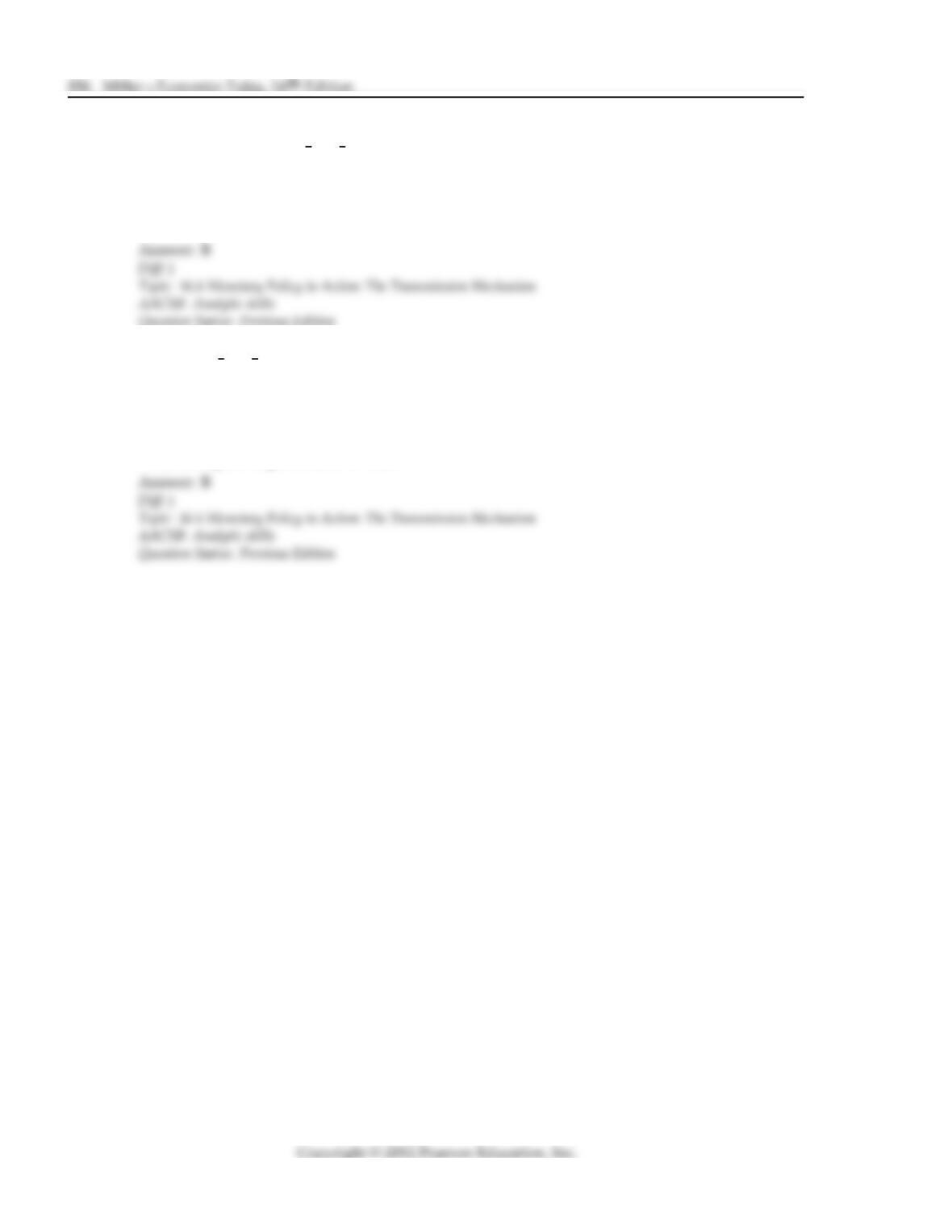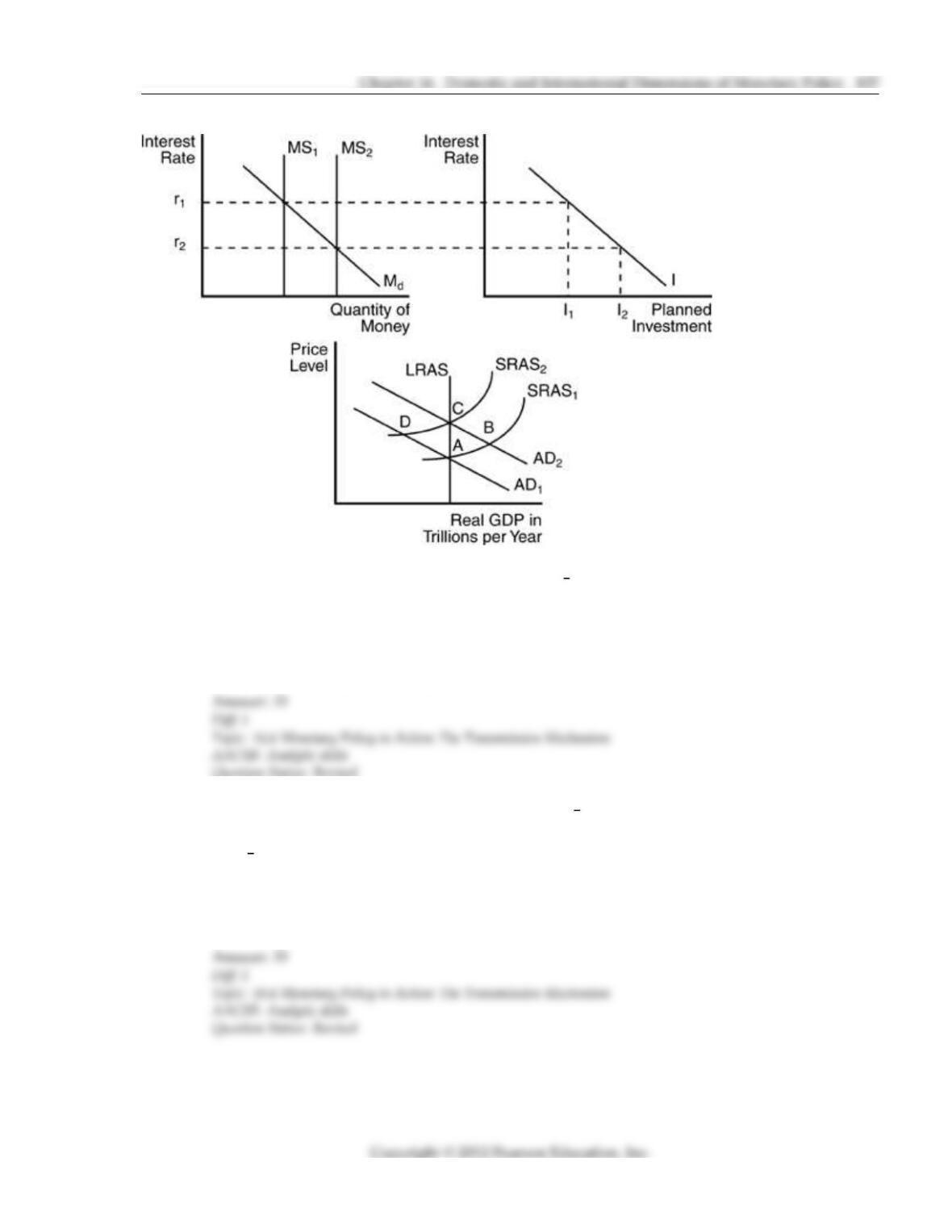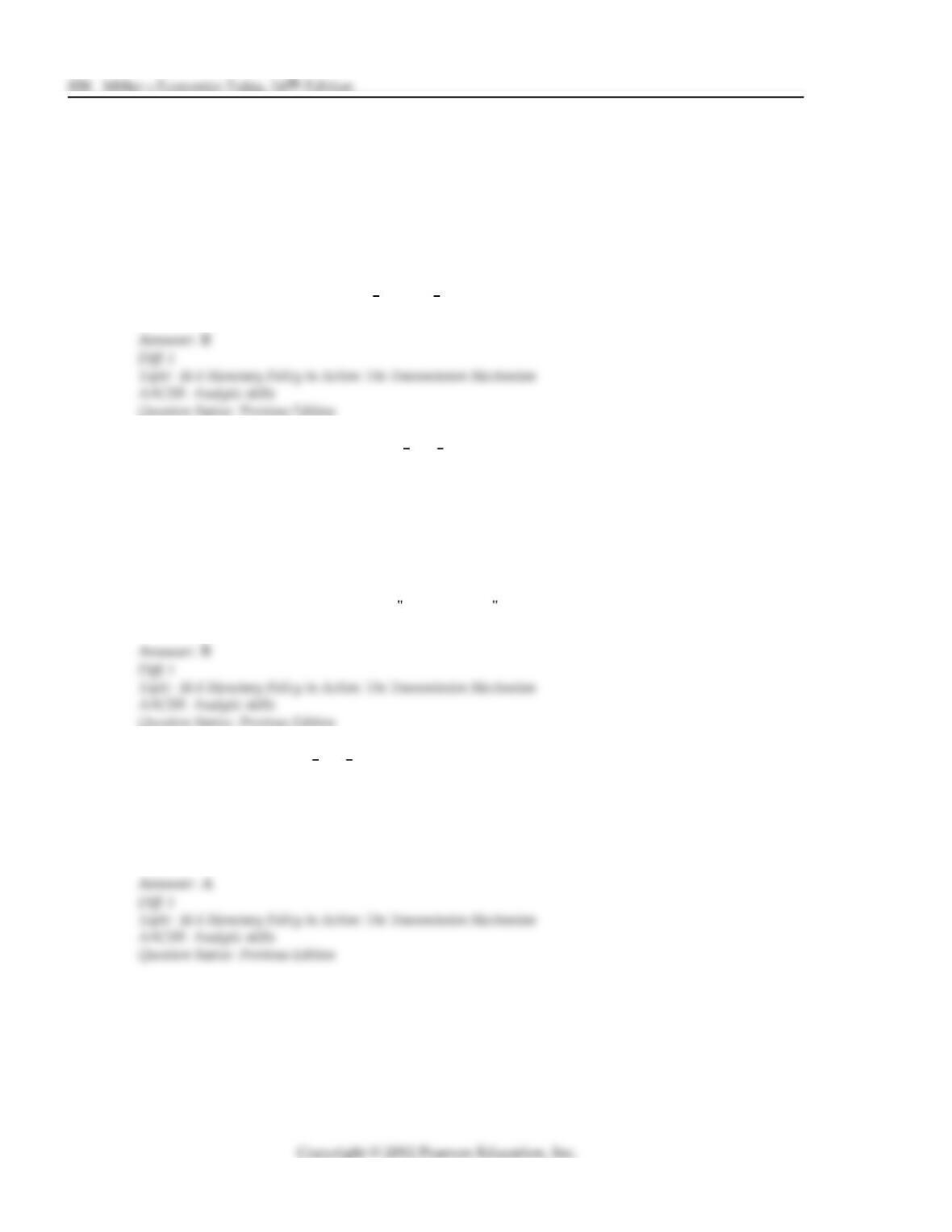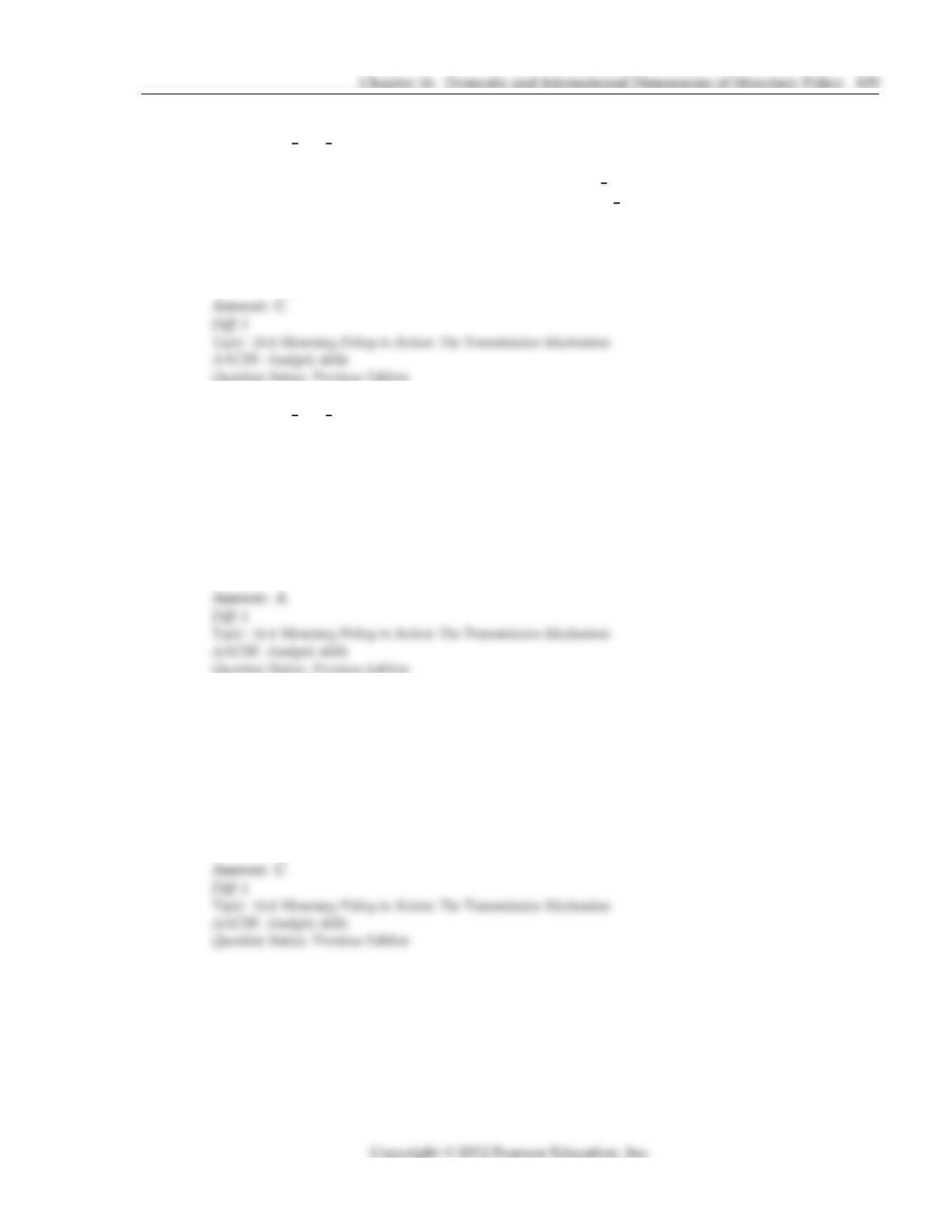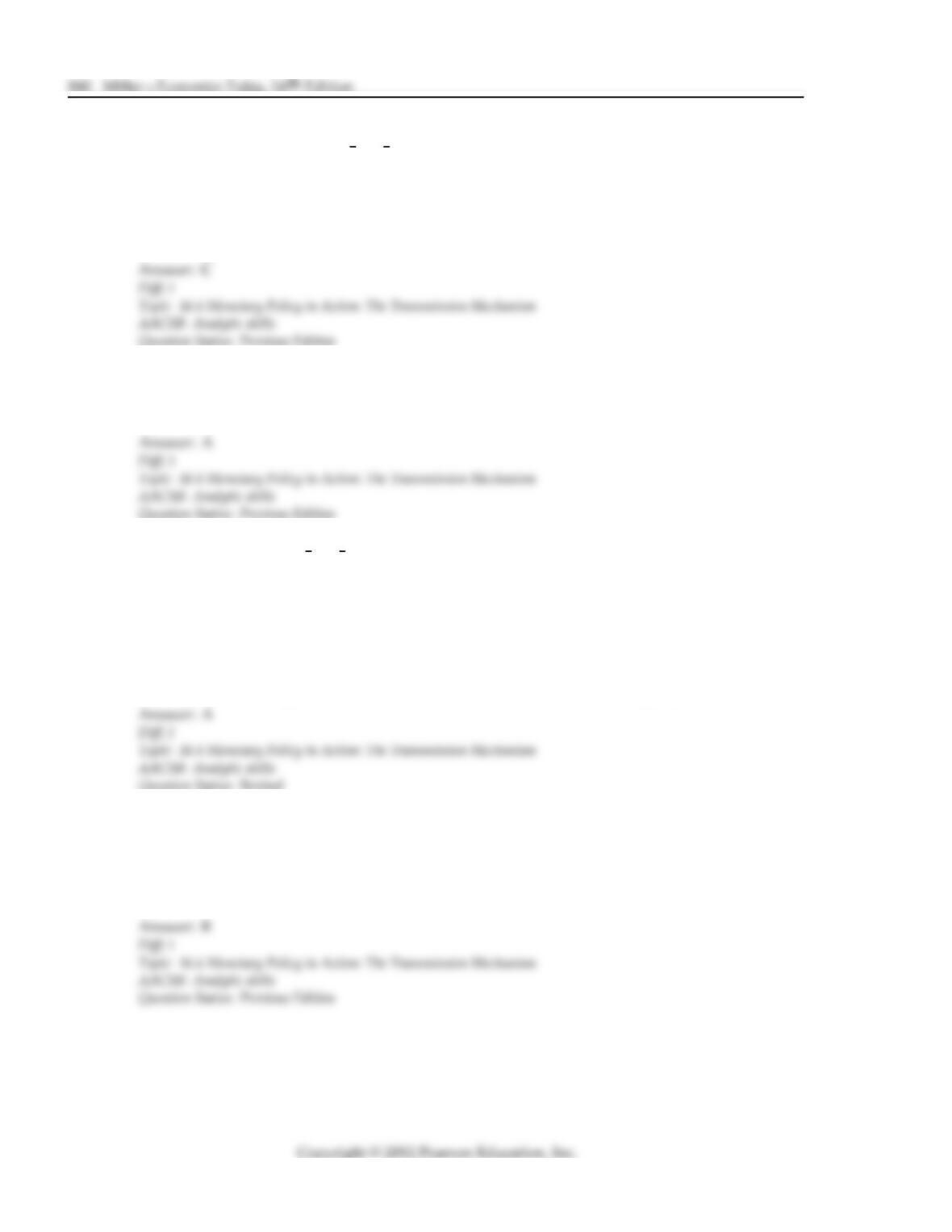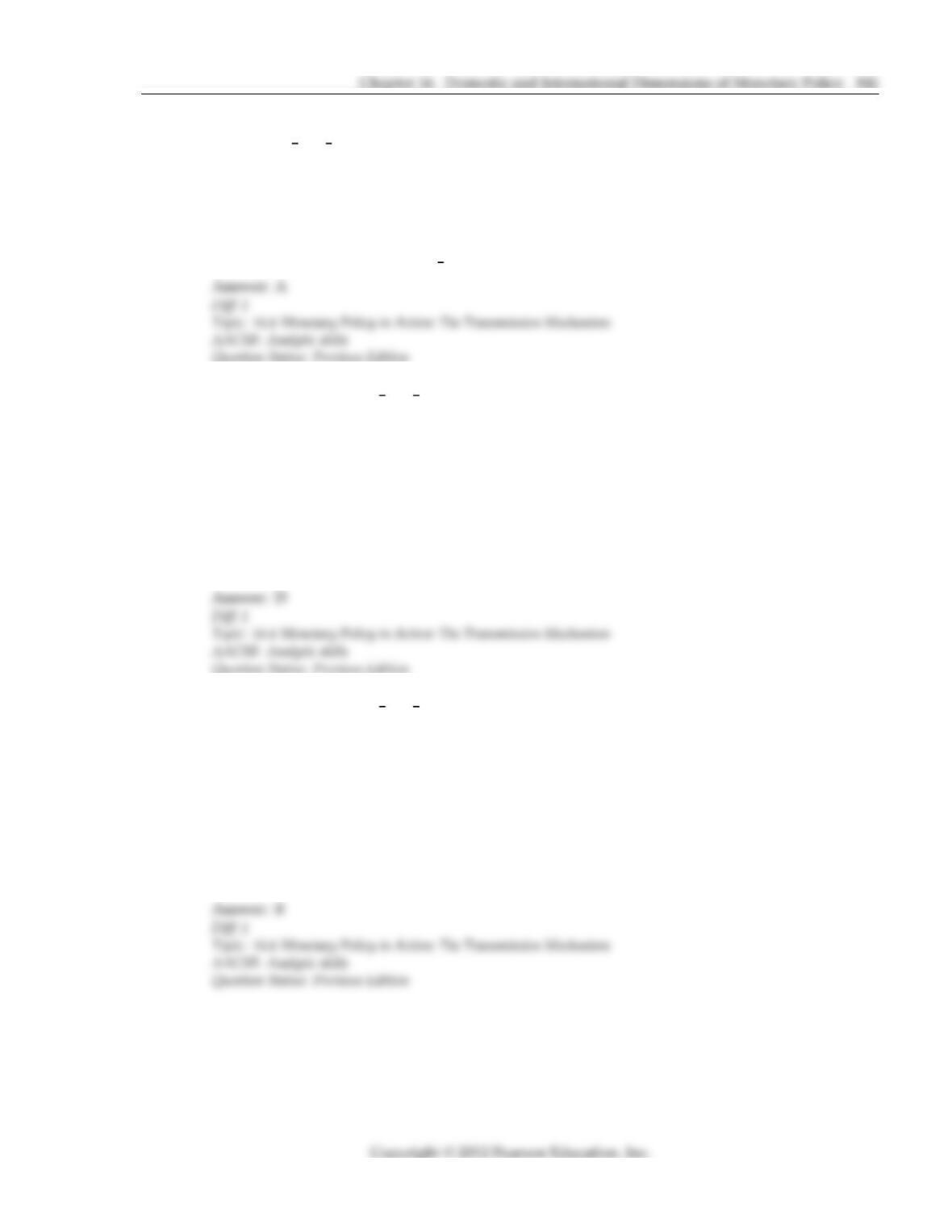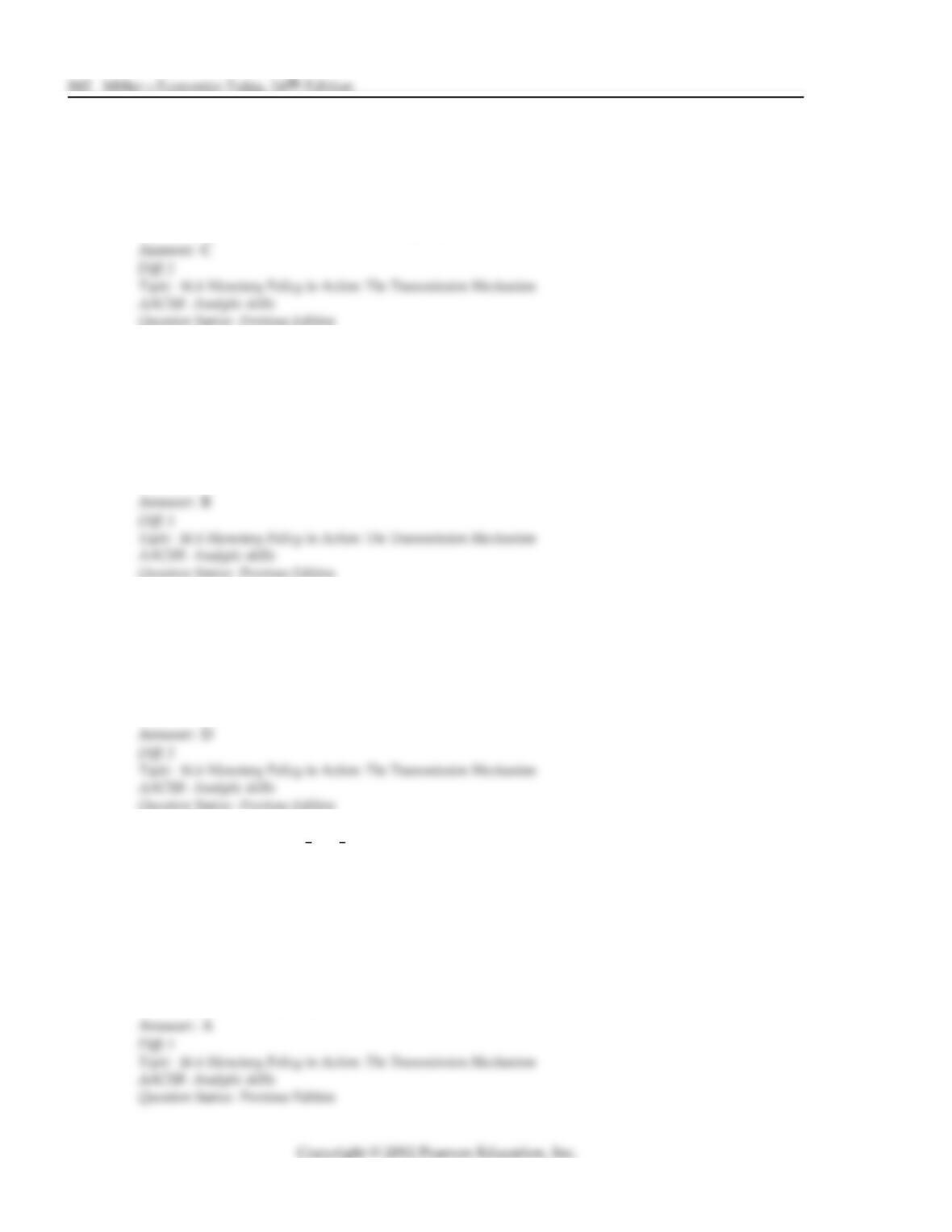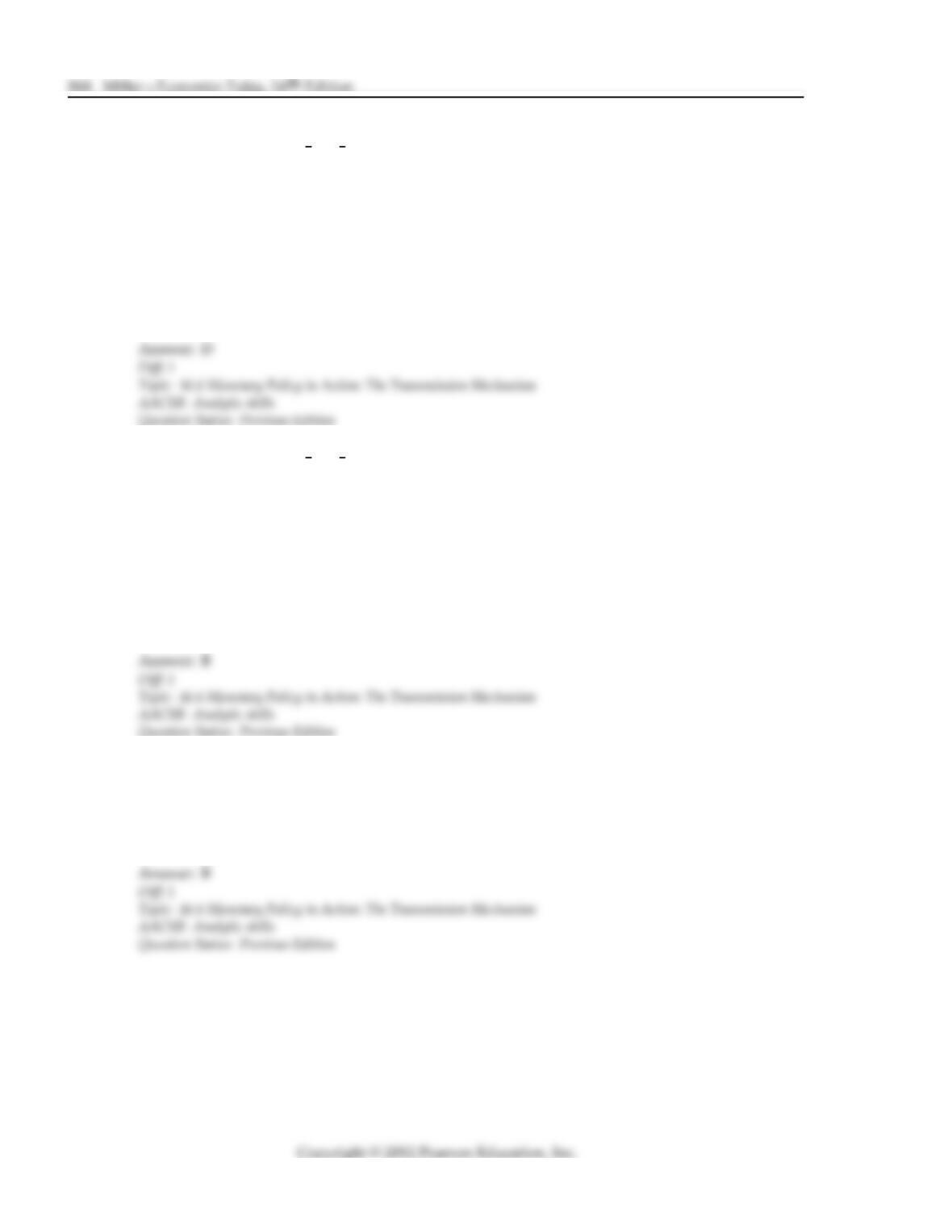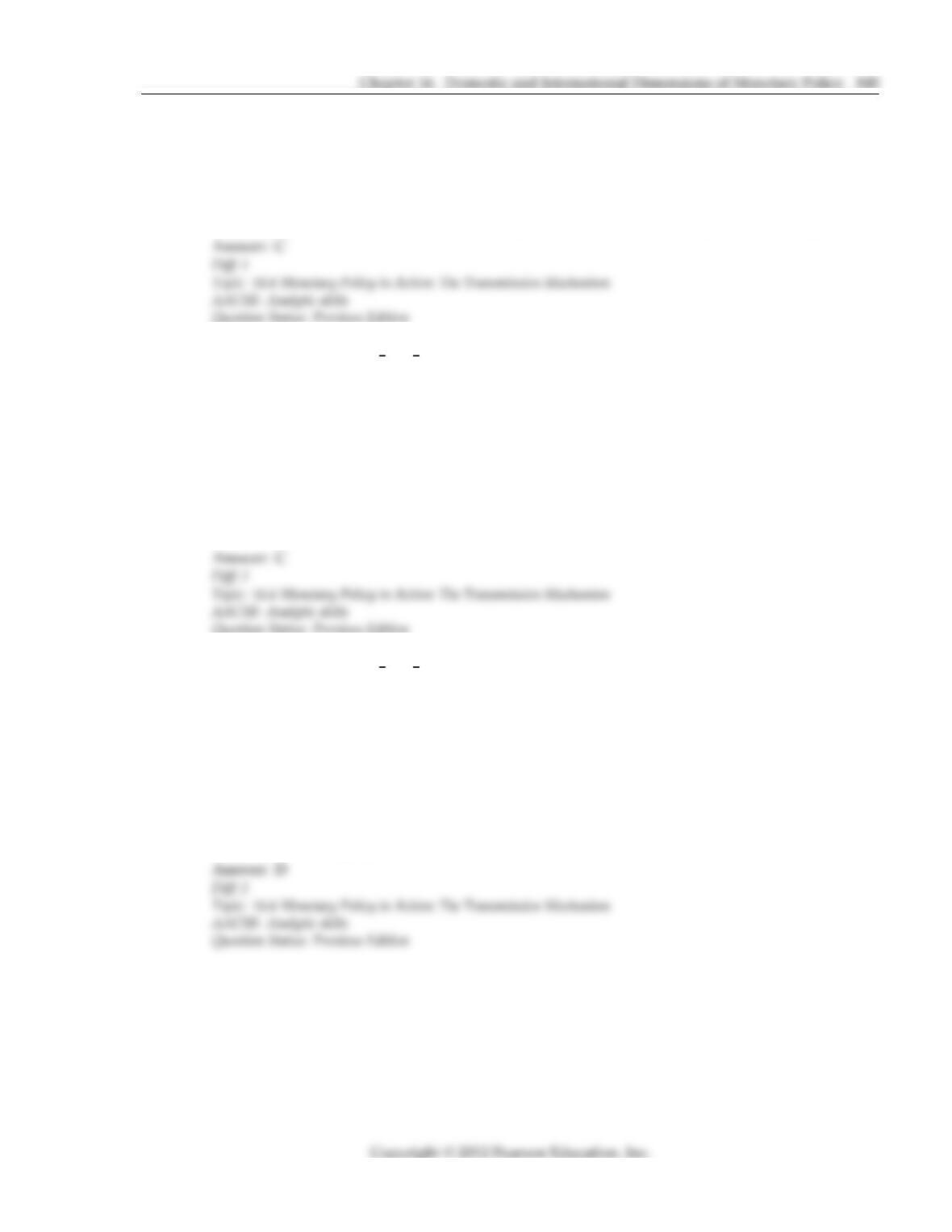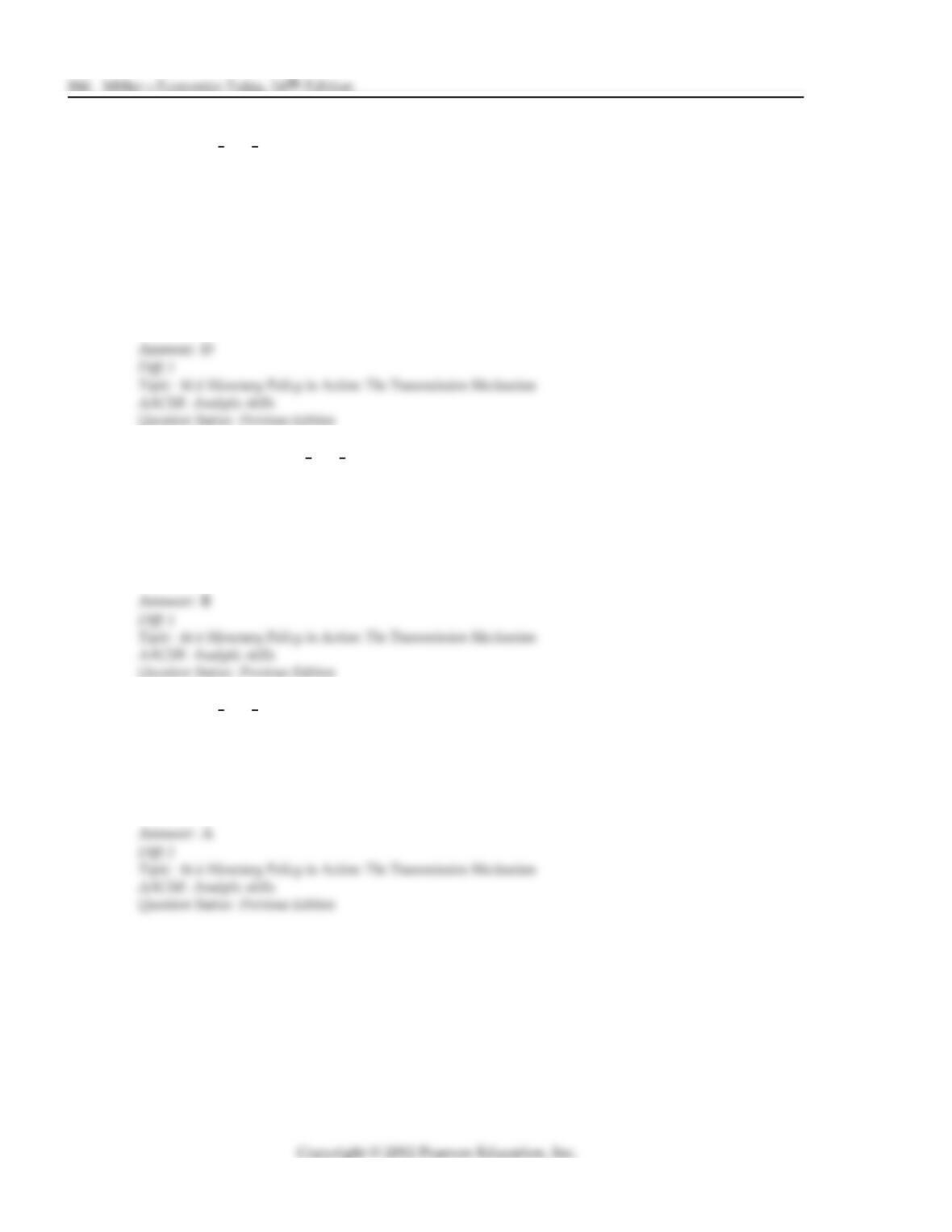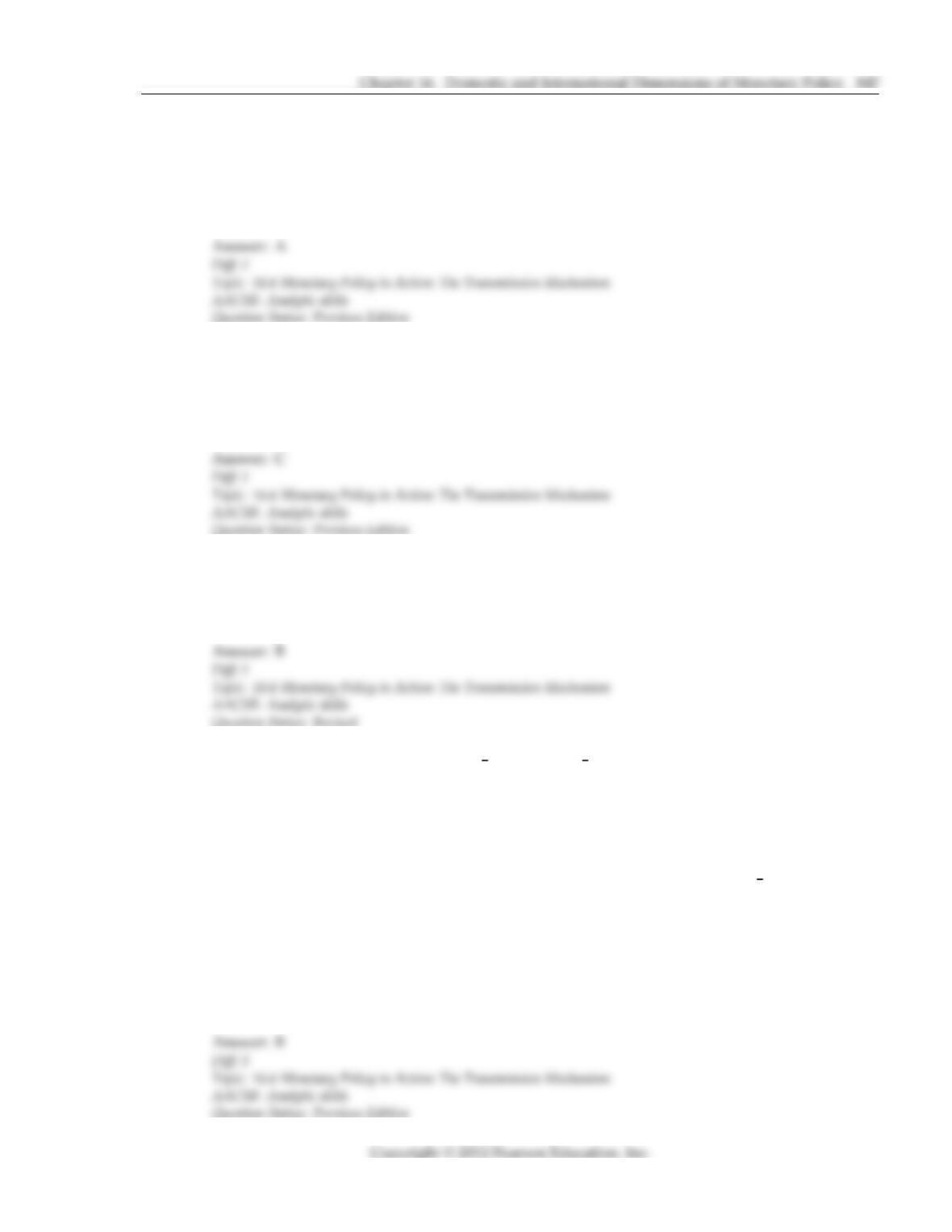39) If the Fed chooses to keep the money supply at a target level, then it must allow
A) all the interest rate to fluctuate.
B) abandon open market operations.
C) vary the spread between the federal funds rate and the discount rate.
D) eliminate reserve requirements.
40) If the Fed chooses to keep the market interest rate at a target level, then it must
A) keep bank reserves at a constant level.
B) abandon open market operations.
C) allow the money supply to fluctuate.
D) ask its member banks to charge this target rate on all loans.
41) If the Fed wants to target a rate of growth of the money supply larger than the current money
growth rate, it should
A) raise the interest rate. B) reduce the interest rate.
C) reduce bond prices. D) create price deflation.
42) Suppose the economy is initially in long run and short run equilibrium. If the Fed decides to
pursue a contractionary monetary policy, we will see
A)
ond prices fall, interest rates fall, aggregate demand remains unchanged as consumption
spending decreases, but investment spending increases. GDP remains constant in both the
short run and the long run, but the price level falls in both.
B)
ond prices fall, interest rates rise, aggregate demand falls as investment and consumption
spending decrease, and real GDP and the price level decreasing in the short run, but only
the price level decreasing in the long run.
C)
ond prices fall, interest rates rise, aggregate demand falls as investment spending
decreases and consumption spending remains unchanged, and real GDP and the price
level decrease in the short run, but only the price level falls in the short run.
D) interest rates rise but no change in bond prices. Aggregate demand falls as consumption
spending and investment spending decrease, and the price level and real GDP fall in both
the short run and the long run.
